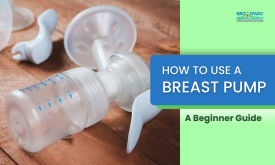The function of a lab coat extends beyond just being used as a uniform; it is a crucial shield in the laboratory. Apart from its aesthetic role, a high-quality lab coat serves as a protective barrier, guarding against spills of chemicals and maintaining sterile conditions. In an environment where precision and safety are of utmost importance, a well-designed, quality white lab coat plays a critical role. These lab coats are like barriers, ensuring substances are kept away from the skin and regular clothing, safeguarding the integrity of individuals present in the room. These lab coats defend against exposure; thus, understanding their diverse roles, it is essential to buy a lab coat that protects from potential hazards with high efficiency and precision. While knowing the different factors before buying a lab coat is vital, understanding the need and care of a lab coat is equally crucial.
Things to Consider Before Buying a Lab Coat
It is necessary to buy a lab coat that offers more than just a professional statement. Factors like ensuring safety, hygiene, and functionality play a crucial role in understanding the efficiency and functionality of the lab jacket. Different factors help the healthcare professional decide the best white lab coat for medical practice. Here is a list of factors to consider before buying the most suitable doctor white coat that assists in improved functionality and protection.
1. Lab Jacket Material
The material of the lab coat makes a huge difference when it comes to comfort, safety, and mobility the coat provides. While there are many materials that are used, a few common materials include the following:
Cotton Lab Coats
When it comes to cotton, it is one of the most comfortable white lab coats that offers breathable and lightweight wear. Altering the fabric is possible to make it fire-resistant and wrinkle-free, which makes it ideal for places where there is exposure to flammable objects. It is an ideal choice for clinical settings that do not involve acid or hazardous chemical exposure. Cotton lab coats may shrink and fail to protect when in contact with corrosive and chemical splashes.
100% Polyester Lab Coats
Polyester lab coats are preferred where cotton fails to protect against chemicals. It is lightweight and contains synthetic plastic for weaving the fabric, making it resistant to chemicals and acid exposure. While it is suitable to work with biomedical and biological pathogens, polyester lab jackets and coats are not ideal for heat and flammable conditions. Plastic melts, so it's dangerous around combustible solvents. Feeling slight discomfort and itchiness when wearing 100% polyester is possible.
Nomex Lab Coat
Nomex white lab coats are more expensive than other common materials but offer tear-resistant, heat-resistant, and protection from fire hazards. It makes the lab coat tough and ideal for use around flammable and pyrophoric substances. It is breathable like cotton and offers spill-resistant and stretchability of polyester. Washing and reusing the lab coat is possible until it is exposed to bleaching agents, which can impact the safety features of the coat.
2. Quality of Fabric
The fabric of the lab jacket is a crucial consideration, influencing the comfort along with the coat’s durability and functionality. While cotton blends offer breathability, making them ideal for environments where comfort is the key, polyester provides chemical resistance, a must-have feature for any lab coat. The choice between these materials is essential to match the lab environment's specific needs and challenges.
3. Fit for Function
The importance of a well-fitted and knitted lab coat cannot be overstated. Apart from the aesthetics, these well-fitted doctors white coats ensure comfort and prevent accidents. Thus, paying attention to details like sleeve length, overall length, and ease of movement is essential for better comfort and convenience. For individuals engaged in intricate lab work or field research, choosing a lab jacket designed with the necessary features is ideal to enhance practicality and safety.
4. Closure Styles
Lab coats come with various closure styles, each with its specific advantages. Traditional button closers offer a classic look, while the new ones provide options like snaps or zippers to enhance convenience. Choosing the right closure style helps balance between comfort, ease of wear, and safety considerations while keeping your fit relevant to your specific work environment.
5. Pockets and Storage
Functionality is certainly a crucial aspect when it comes to lab coats, and this extends to pocket designs and placement as well. Opt for coats with ample pockets strategically located for easy access to essential tools like pens, notebooks, or small instruments. However, it is also necessary to be cautious while choosing lab coats with excessive pockets as these may hinder freedom of movement.
6. Resistance to Elements
Understanding the potential hazards in your laboratory is critical in selecting an appropriate coat. If there is a risk of exposure to chemicals, acids, or biological substances, it is crucial to prioritize the list of factors to consider with these specific resistance properties. This adds an extra layer of protection and assures that your safety remains a top priority regardless of the working conditions.
7. Collar Types
While the collar seems like a minor detail, it certainly contributes to both functionality and aesthetics. Consider these as a level of protection needed for the neck area and choose between classic, notched, or mandarin collars accordingly. The right collar type enhances the safety, functionality, and overall look of the lab coat.
8. Easy Maintenance
It is essential for the lab coats to be easy to clean and maintain, primarily to uphold a consistently professional appearance. Look for lab coats that withstand frequent laundering without compromising integrity. This ensures longevity and a neat, polished look throughout the usage.
9. Work Setting
When buying a lab coat, a major factor is understanding your work setting and requirements. If you are working in a setup that brings exposure to frequent chemical and flammable splashes, using a full-length lab coat made of compatible material is required. Using a lab jacket for consultation purposes is suggested. Always analyze your work setting and select the white lab coat accordingly.
10. Additional Considerations
Consider the overall weight of the lab coat, as a balance between sturdiness and comfort is essential. Apart from weight, it is also important to consider ventilation and breathability. Ventilation features like back vents help enhance breathability. Besides the long-term and durable lab coats, several options also provide disposable features. An individual can dispose off the lab jacket post using it to ensure that hygiene is maintained. Certain reflective elements also prove beneficial if the work involves low-light conditions or outdoor activities. It is also essential for the lab jacket to be flame-resistant for environments.
Difference Between Lab Coats and Lab Jackets
Design and Purpose
A basic difference between the design of lab jackets and lab coats is the length. Lab coats generally are knee length or below and offer full protection when used in laboratories. However, lab jackets are waist-length, loose fit, and offer some protection. Using white lab coats is preferred when exposed to hazardous chemicals and situations with high chances of spills. Lab jackets are feasible if the exposure is less and involves light activities.
Comfort and Functionality
For safety concerns, fitting lab coats and jackets directly affects comfort and functionality. When you use a lab coat, it restricts movement, especially of the lower body. On the contrary, lab jackets offer free leg movement and comparatively have a loose fit, giving better mobility. Considering the functionality and safety, lab coats give complete protection.
Uses and Requirement
Selecting lab jackets or coats can make a difference depending on the healthcare facility. Using a doctor white coat is preferred for places with continuous and long exposure to chemicals or biological contaminants. For times when there is no exposure to many contaminants but still require a safety measure, lab jackets offer the solution.
The Benefits and Function of White Lab Coats
Safety Regulations
When working in the healthcare sector, ensuring the safety of patients and doctors is equally crucial. While the doctors focus on treating the patients, the chances of them being exposed to many viruses and contaminants are high. Using a white lab coat helps create a safety barrier for the doctors. It protects them from direct contact with harmful substances. During checkups, surgical procedures, or lab tests, the lab coat protects the healthcare professional from heat, flame, cross-contamination, virus, etc.
Resist Exposure to Chemicals
While buying a lab coat is basic for safety regulation, it adds to increased protection from exposure to chemicals. There are various chemicals used in labs and other healthcare sectors that can cause harm to the skin when in direct contact. The use of lab coats designed specifically for protection against hazardous spills and heat is needed to sustain the healthcare environment.
Easy Cleaning and Maintenance
When a doctor white coat offers a protective shield, it is vital to ensure it is clean when reused. Most lab coats offer easy cleaning, which enables a hygienic environment. Also, being lightweight, it is easy to carry wherever you go to ensure smooth and safe laboratory work.
Convenient and Helpful
The lab coats have different pockets that allow the healthcare professional to easily store tools or other essentials they might need handy when working. The material of lab jackets and coats allows easy mobility and smooth functioning, making the lab coats a convenient solution for ensuring safety at the workplace.
Lab Jacket Cleaning
Autoclave before laundry
Autoclaving is a process that helps decontaminate white lab coats and jackets. The machine uses a strong heated container that helps treat the lab coats that have been exposed to harmful chemicals and biological substances. Before the process, check if the coat meets the autoclave safety.
Wash guidelines
• Unbutton the lab coat and empty all the pockets before proceeding to wash.
• Check the label for temperature and wash guidelines to ensure the white lab coat is not damaged.
• Use detergent and bleaching agents, as mentioned on the laundry tag. Be careful to check before using bleaching agents, as it can damage the safety features the lab coat can provide.
• Use the hottest water setting in the machine to wash the coat unless mentioned for low temperatures on instruction.
• Wash the coat weekly to ensure hygiene and cleanliness.
• Read the guidelines and dispose of the coat for severe chemical and biological contamination. Do not wash the lab coat.
When to dispose
When the exposure to chemicals is too high, it can get difficult to clean properly. Also, certain chemicals and substances can cause reactions when cleaning in an autoclave or with water. Disposing of the doctor white coat is the best solution in such situations. To dispose, seal the coat in a bag and carefully label it as discarded to ensure no one uses it.
These doctor white coats or lab jackets are more than a uniform; it is an investment in safety and efficiency. Considering these factors, like fabric, fit, closure styles, etc., helps ensure that the doctor white coat meets the industry standards and aligns seamlessly with the demands of the unique work environment. By narrowing down the right factors and prioritizing functionality, it is possible to pick the most suitable white lab coat catering to specific requirements with utmost efficiency. However, while quality plays a prominent role, buying a lab coat from reliable sources is essential.
As one of the most trusted medical supply providers, Broadway Medical Supply assures of offering top-quality lab coats catering to the diversified requirements of different work environments. Broadway Medical Supply offers an extensive range equipped with quality features, from various options available in white lab coats and doctor white coats to some disposable lab coats. Explore the range of options and rest assured with Broadway Medical Supply’s quality features and fit.
H2 - Frequently Asked Questions (FAQs)
1. How Often Should You Wash Your Lab Coat?
Ideally, if the doctor white coat is visibly dirty, it’s better to put it in for washing immediately. If not, it is preferred that you should wash the lab coat weekly. If you cannot meet the wash time, ensure not to exceed using it for more than a month. For conditions that damage the lab coat, dispose of it rather than cleaning it.
2. Different Types and Styles of Lab Coats
There are three basic types of lab coats – full-length white lab coats, medium or knee-length white lab coats, and short lab jackets. All three offer different purposes and are available in different materials that cater to the different requirements of the healthcare sector.
3. Which Industries Make Use of Lab Coats?
While doctor lab coats are common in hospitals, different lab coats are used in various industries. A few industries that gain benefits from using white lab coats are:
• Pharmacies and clinical laboratories
• Dental clinics
• Food processing units
• Manufacturing sectors
• Scientific research centers
• Chemical factories









